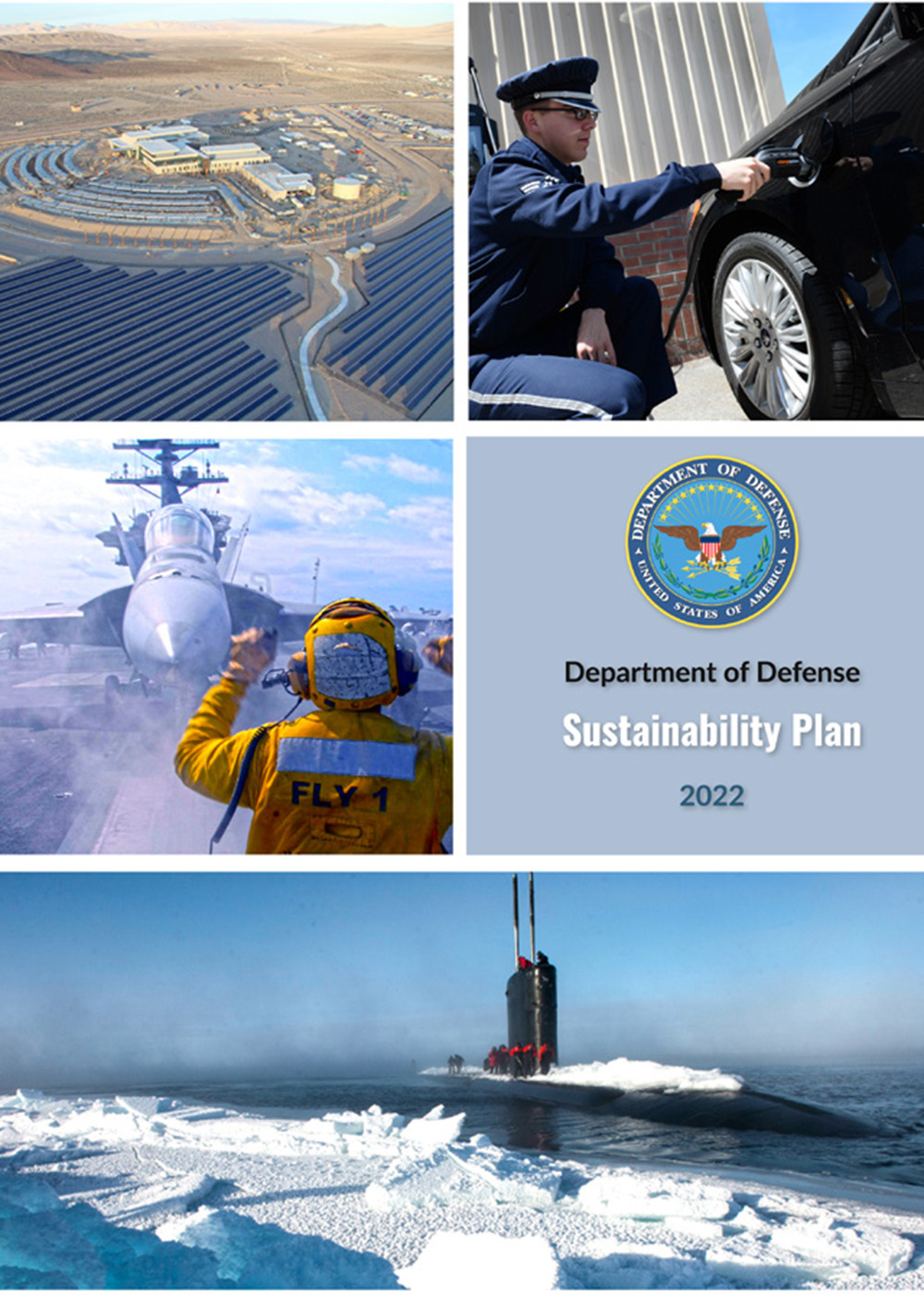Advancing Climate Literacy
From workforce education to continuous improvement to innovation, these best practices underscore the Army's commitment to reducing environmental impacts.
By Ashley M. Kestner
Article published on: April 1st 2024, in the Spring 2024 AL&T Edition
Read Time: < 4 mins

A CLIMATE INFORMED WORKFORCE
Courses, such as “Integrating Sustainable Acquisition” and “Climate Adaption for Program Managers,” offered through the Defense Acquisition University, aim to ensure the acquisition workforce has the knowledge and tools to mitigate environmental challenges. (Photo by Mizuno K, Pexels)
The U.S. Army perpetually navigates the dynamic intersection of military acquisition and environmental sustainability. Juggling these constantly evolving operational demands and environmental impacts is no minor task, but the Army is up for the challenge.
In alignment with President Biden’s 2021 executive order and the Army’s 2022 Climate Strategy, Army sustainability efforts are gaining momentum. This is especially critical within the Army Acquisition Workforce (AAW), where three fundamental factors are converging to propel military readiness and environmental responsibility.
Factor One: Climate-Informed Workforce
Recognizing the importance of climate literacy, the Army is looking to integrate climate considerations into its training to enhance workforce proficiency in climate-related matters. The Army acquisition community is leaning forward in this effort.
The first course, Integrating Sustainable Acquisition (FAC 038; three hours, two continuous learning points (CLPs)), provides crucial insights into sustainability and climate risk management considerations for acquisition. The content aims to advance procuring products and services aligned with federal sustainable purchasing requirements. Moreover, it explains the importance of mitigating the impacts of physical climate risks on the delivery of products and services to the federal government.
The second course, Climate Adaptation for Program Managers (FAC 095; one and a half hours, one CLP), offers high-level background information on risk, authoritative sources, and emphasizes the necessity of climate adaptation in procurement. The content includes illustrative examples of risk management strategies. It also outlines the impacts of climate change on the international supply chain, potential cost escalations, effects on commodity availability, risks to overseas operations and more.
These and other sustainability courses collectively embody the Army’s ongoing commitment to a climate-informed workforce, ensuring employees have the knowledge and tools they need to mitigate environmental challenges.

DOD SUSTAINABILITY PLAN
The 2022 DOD Sustainability Plan outlines strategies for improving long-term sustainability, increasing energy efficiency and improving environmental impacts. (Image by DOD)
Factor Two: Continuous Improvement
In compliance with the fiscal year 2022 National Defense Authorization Act, the Army must provide ongoing assessment of the knowledge, tools and capabilities necessary for the acquisition workforce to seamlessly integrate ecological considerations into acquisition processes, resource allocation and decision-making.
Further, recent findings from a RAND Corp. study underscores the pivotal role of the defense acquisition workforce in incorporating environmental considerations into planning and systems design. The study acknowledges the existing environmental expertise within the acquisition workforce but recommends areas for continuous improvement. According to the Director of Sustainability and Acquisition for the Office of the Deputy Assistant Secretary of Defense for Environment and Energy Resilience, DOD is reviewing the study and its suggestions and remains committed to expanding upon the sustainability resources and guidance available to the DOD workforce, including those in acquisition. These continued improvements will help fuel defense sustainability goals, enhancing environmental responsibility in the near and long term.
These continued improvements will help fuel defense sustainability goals, enhancing environmental responsibility in the near and long term.
Factor Three: Integrate Sustainability, Embrace Innovation
The Army is taking a proactive leadership role in addressing environmental concerns. Aligned with the Army’s broader goals for climate change risk analysis and the ambitious target of achieving net-zero greenhouse gas emissions by 2050, the Army Climate Strategy charts a clear road map for establishing resilient supply chains and more.

MAINTAINING SUPPLY
The Army Climate Strategy aims at establishing a road map for building resilient supply chains while also achieving net-zero greenhouse gas emissions by 2050. (Photo by Cottonbro Studio, Pexels)
Acquisition and logistics is the second line of effort within this strategy, positioning the AAW as pivotal to achieving the Army’s sustainability goals. The intersection of cost-effectiveness and environmental impact is evident throughout this approach. For example, the implementation of a Buy Clean policy for procuring construction materials and the Army’s commitment to tactical innovation like vehicle electrification and autonomous resupply.
Other acquisition considerations include efforts to reduce fossil fuel consumption by integrating electric tactical vehicles, anticipatory logistics enabling predictive maintenance and supply chain efficiencies, and focusing on overall energy efficiency— including generators with microgrids, water reuse capability and LED lighting.
These courses collectively embody the Army’s ongoing commitment to a climate-informed workforce.
Conclusion
These and other best practices underscore the Army’s unwavering commitment to innovation and the adoption of new technologies designed to reduce environmental impacts. The AAW stands ready to contribute to a sustainable and environmentally responsible defense infrastructure. Together, we will champion sustainability, underscore our commitment to workforce literacy, and exemplify leadership through tangible action. In doing so, we meet the challenges of the present and actively shape a greener, more resilient future.
For more information on sustainability best practices and resources across the federal government, go to https://www.sustainability.gov.
ASHLEY M. KESTNER is the Acquisition Career Management Advocate program manager and a communications analyst for the U.S. Army Director of Acquisition Career Management (DACM) Ofce. She has more than 15 years of experience leading strategic communication, media relations, crisis communication, stakeholder management and brand advancement initiatives. She holds a B.A. in journalism from Indiana University.